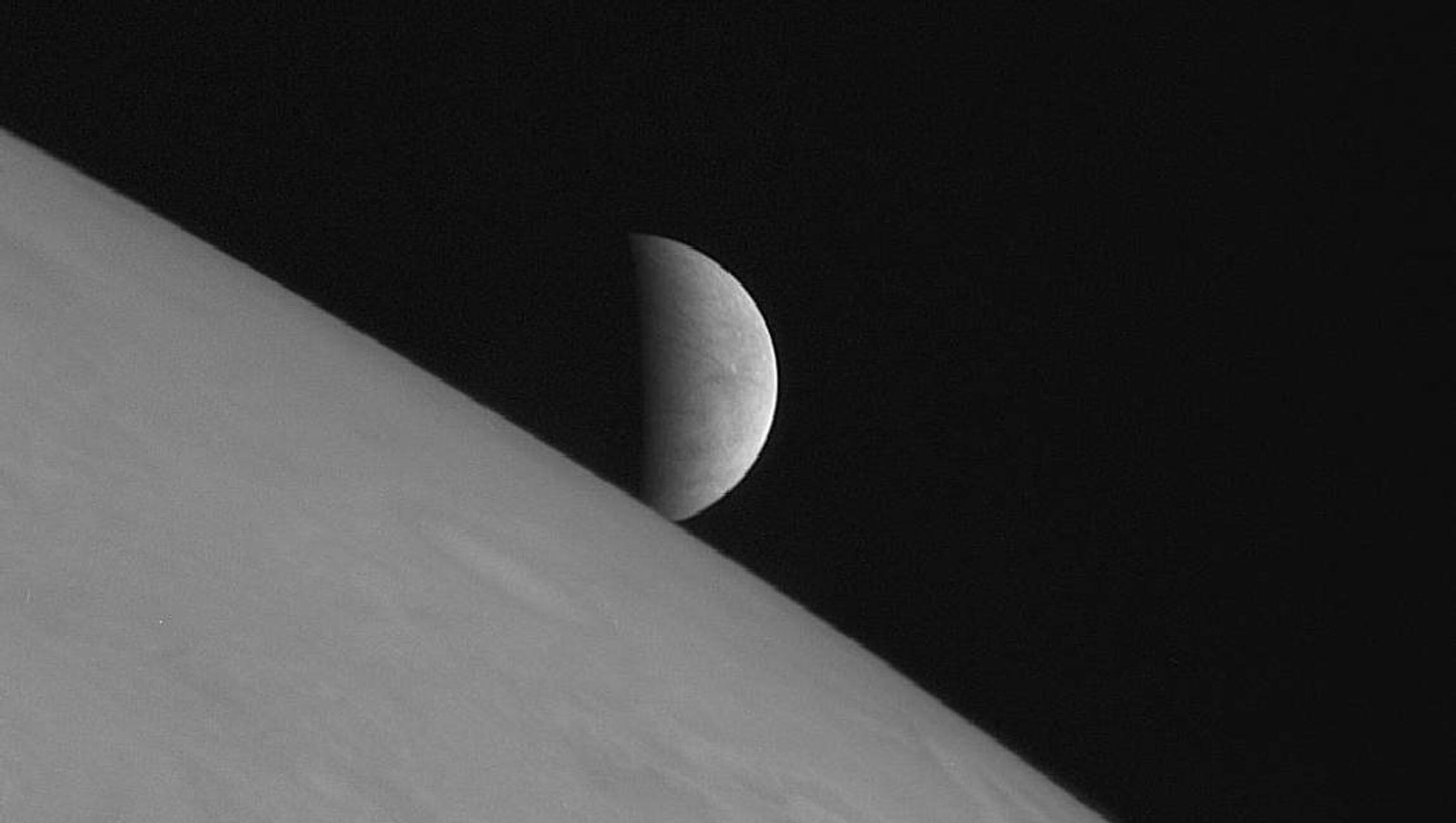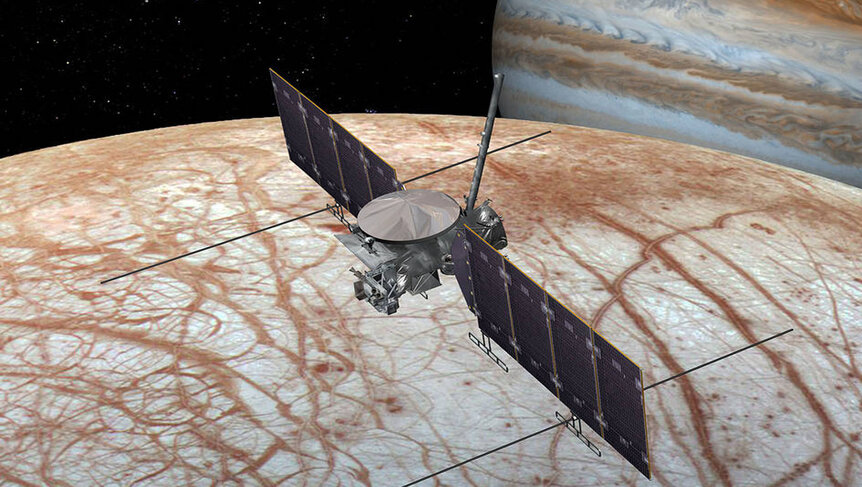Create a free profile to get unlimited access to exclusive videos, sweepstakes, and more!
Now we have even more hints at Europa’s alien subsurface ocean

Space water already gushes into the void from Saturn’s frozen moon Enceladus, meaning there is probably a vast ocean beneath the surface, and astronomers are now that much closer to proving the same phenomenon happens on the icy orb Europa.
Europa is Jupiter’s mistress in Greco-Roman mythology, and Jupiter’s fourth largest moon in the solar system. There has been no hard evidence that plumes of water vapor really do explode from cracks in the ice, and even NASA sort of misrepresented an observation last year. But now scientists from the Max Planck Institute for Solar System Research (MPS) in Germany are presenting the closest thing we have to definite proof that Europa breathes out water vapor — meaning that it could be hiding a subsurface ocean.
When NASA’s Galileo probe flew by Europa in 2000, its robotic eye may or may not have seen one of these plumes shooting out of its crust (and that ice can get to be up to 11 miles thick). While NASA and ESA have found more evidence that could almost certainly — emphasis on almost — mean Europa is a freezing water world, nothing has been proven yet. Jupiter lives up to the name it shares with a mythical god of supreme power. Its magnetic field is 20 times stronger than Earth’s. When Galileo’s magnetometer showed that its magnetic field had less power near Europa, it was something that might have meant the spacecraft captured evidence of a plume during that flyby.
Another instrument on the probe, its Energetic Particles Detector (EPD), collected more data that was possible evidence of a plume. It found that fewer protons were floating around near Europa than expected. Europa orbits in Jupiter’s enormous magnetic grasp, so this was an abnormality that caught scientists’ attention, though some dismissed it as the moon just getting in the way of the EPD as Galileo was trying to observe Jupiter.
In collaboration with ESA scientists, the MPS team recreated the Galileo data to test whether a cryovolcanic eruption was the possible cause of that sudden lapse in magnetic pull. It was an experiment that would only succeed with the assumption that Galileo had run into a plume that disrupted Jupiter’s magnetic field. Europa’s thin oxygen atmosphere, and any water that might be released into it, are full of uncharged particles. When high-energy protons crash into such particles, they get extra electrons that take away their charge, and Jupiter’s magnetic field can no longer hold them back. Digitally simulating the same movements of high-energy protons that were present in space during the Galileo flyby showed this is what happened.
“What is new here is that part of the decrease can be explained by charge exchange, a process whereby the protons are removed after they lose their electrical charge in Europa's thin atmosphere,” the MPS scientists said in a paper recently published in Geophysical Research Letters. “Furthermore, we see that there is a special decrease, which can be explained by an erupting plume of water vapor, thereby providing additional evidence for an active plume during [the] Galileo flyby.”
Does this mean water? Cryovolcanism? Aliens? What it probably means is that, just like Enceladus, Europa could have a subsurface ocean in which primitive forms of life may be able to survive. The plumes are most likely from hydrothermal vents that erupt with hot water that shoots through the ice and into the darkness like liquid fireworks. We’re just going to have to wait for results from ESA’s JUICE (Jupiter Icy Moon Explorer) mission and NASA’s Europa Clipper, launching in 2022 and 2023, to really find out.
Until then, you can give yourself nightmares about what kind of life forms could be lurking beneath extraterrestrial ice.















